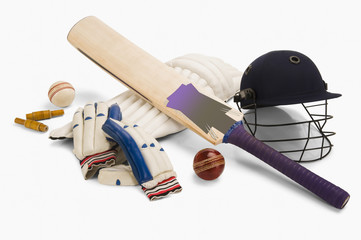Title: Choosing the Right Cricket Bat Weight: A Comprehensive Guide for Optimal Performance
Introduction: In the world of cricket, selecting the right bat is crucial for a player’s performance. One key factor to consider is the weight of the cricket bat. In this article, we will delve into the debate of whether a lighter or heavier cricket bat is better, exploring the impact on performance and providing insights to help you make an informed decision.
- Understanding Cricket Bat Weight:
- The cricket bat’s weight is typically measured in pounds and ounces.
- The weight distribution varies across different parts of the bat, influencing the overall feel during play.
- Advantages of a Lighter Cricket Bat:
- Swing Speed:
- Lighter bats are easier to manoeuvre, allowing for faster swing speeds.
- Quick reactions to deliveries are crucial, and a lighter bat aids in achieving this.
- Control and Shot Placement:
- Lighter bats provide better control, enabling players to place shots precisely.
- Ideal for players who rely on finesse and placement rather than power.
- Maneuverability for Quick Shots:
- Lighter bats are advantageous for executing quick shots, such as pulls and cuts, with greater ease.
- Swing Speed:
- Advantages of a Heavier Cricket Bat:
- Powerful Shots:
- Heavier bats are known for generating more power in shots, making them suitable for big hitters.
- Increased mass behind the shots can result in longer distances when the ball is struck cleanly.
- Handling Bouncers:
- Heavier bats can be more effective in handling short-pitched deliveries, offering stability against bouncers.
- Durability:
- Generally, heavier bats tend to be more durable due to the robust construction required to support the added weight.
- Powerful Shots:
- Player’s Playing Style:
- Batsmen’s Preference:
- Understanding one’s playing style is crucial in deciding between a lighter or heavier bat.
- Aggressive players may prefer the extra power provided by a heavier bat, while finesse players might lean towards a lighter option.
- Pitch Conditions:
- The condition of the pitch can influence the choice of bat weight.
- A heavier bat may be preferred on flat pitches, while a lighter bat could be advantageous on bouncy tracks.
- Batsmen’s Preference:
- Balancing Act:
- Sweet Spot:
- Finding a bat with the right balance is essential.
- The sweet spot, the area of the bat that delivers maximum power, should align with the player’s preferred stroke.
- Trial and Error:
- Experimenting with different bat weights in practice sessions helps players determine their comfort level and performance with varying weights.
- Sweet Spot:
- Conclusion:
- Personal Preference:
- Ultimately, the choice between a lighter or heavier cricket bat comes down to personal preference and playing style.
- Players should consider their strengths, weaknesses, and the conditions they commonly encounter.
- Adaptability:
- Being adaptable and open to trying different bat weights is key to finding the perfect balance that enhances individual performance.
- Personal Preference:
In conclusion, the debate between a lighter or heavier cricket bat is subjective, and each has its unique advantages. It’s essential for players to assess their playing style, preferences, and adaptability to make an informed decision that contributes to optimal performance on the cricket field.


I like the helpful info you provide in your articles. I will bookmark
your blog and check again here regularly. I’m quite sure
I will learn plenty of new stuff right here! Good luck for the next!
Thank you for your support and kind words! I’m glad you find my articles helpful. Stay tuned for more useful content!
Nice answer back in return of this difficulty with genuine arguments and explaining the whole thing regarding that.
Thank you! I aim to provide clear and genuine explanations to help with any difficulties you may encounter.